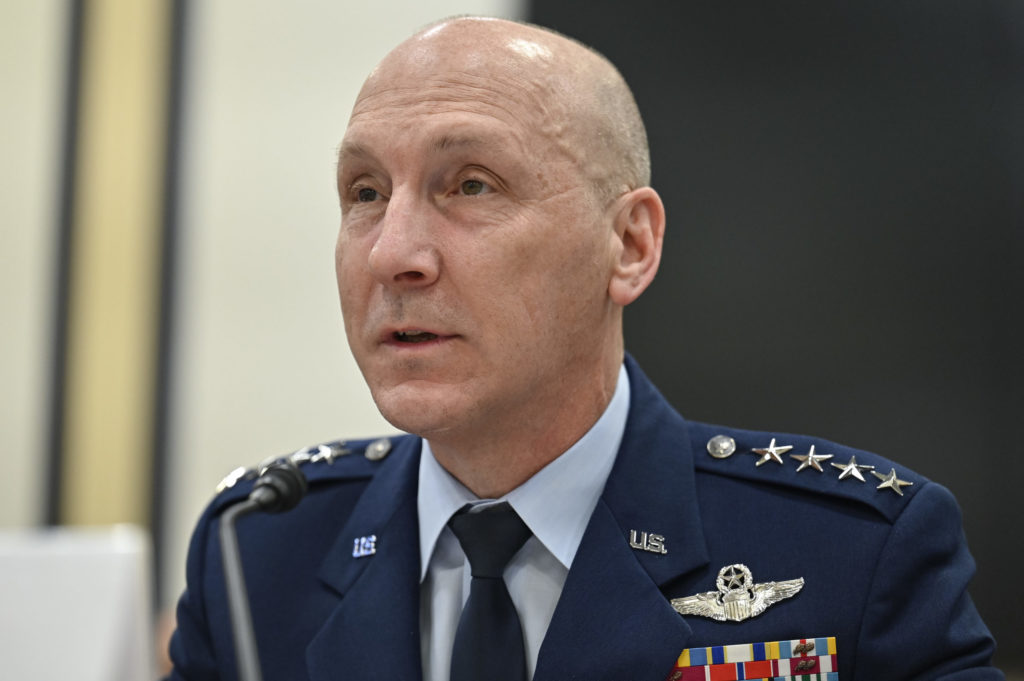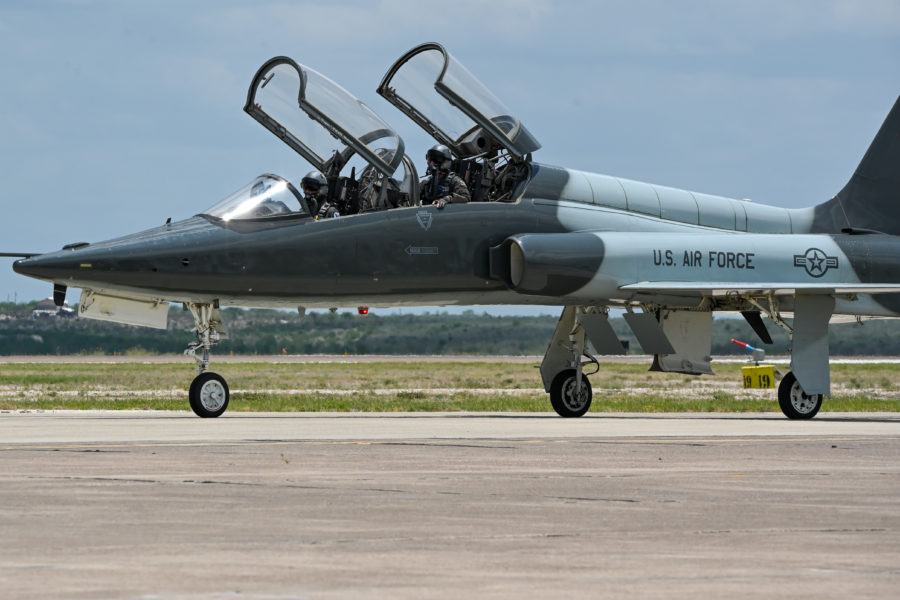Problems with aging Air Force trainer aircraft are slowing down pilot production, making a persistent problem worse, according to written and spoken testimony by Vice Chief of Staff Gen. David W. Allvin before the House Armed Services readiness subcommittee.
Allvin’s written statement detailed the that in fiscal 2022 the Air Force:
- Suffered a net loss of about 250 pilots
- Ended 1,900 pilots short of its goal of 21,000
- Produced 1,276 pilots, 105 fewer than 2021 and 224 short of its 1,500 goal
Making matters worse is the state of the Air Force’s trainer fleet. Its decades-old T-6 and T-38 trainers are in such a state that it now takes up to two years just to get a future pilot from commissioning to the start of pilot training, Allvin said.
Asked by Rep. Jennifer Kiggans (R-Va.) how long it takes to train an Airmen to be a pilot, Allvin said the timeline should be around 18 months for mobility pilots and two years or more for fighter or bomber pilots. But getting newly commissioned officers into the pilot pipeline is taking up to two years longer because there aren’t enough training aircraft available.
“From the time they are commissioned—because of the challenges we’re having with T-6 and T-38—we have a little bit of a backup. It can be as many as four years,” Allvin said. “So almost an 18 month- to 24 month-wait just to get into pilot training.”
The Air Force is seeking $12.6 million for T-38 safety and sustainment and $11.3 million in T-6 modifications in its fiscal 2024 budget request in an effort to address the problems, Allvin wrote.
The new T-7A Red Hawk is supposed to replace the T-38, but won’t go into production until 2025, having encountered delays, according to the Air Force’s latest timeline. That raises the pressure to keep the T-38 going.
Pressure is also rising on the persistent pilot shortage. Asked by Rep. Carlos A. Giménez (R-Fla.) about the problem, Allvin stressed that the Air Force continues to have enough pilots to fill all its cockpits, but it suffers in staff jobs where pilot experience would be beneficial.
“In order to have a healthy pilot professional force, you need first and foremost the combat cockpits filled,” Allvin said. “Then you need the trainer cockpits filled. Then you need the test cockpits filled. And after you fill out the cockpits, then our next priority is the leadership—you want the leadership positions filled. And then after you have all those filled, then you go to the staff positions. That is where we are currently absorbing our shortage: in the staffs.”
Only about 70 percent of staff positions typically filled by experienced pilots are manned today, Allvin said. “If this sustains over time, then we will have a sort of misshapen force, where you won’t be able to have professionally developed enough of the rated membership to provide that expertise and leadership at the higher level,” Allvin said. “But for right now, we have not had any of our combat training or test cockpits go empty.”

As things stand now, pilots’ professional development is affected by the shortages, Allvin wrote.
The Air Force has struggled to retain more pilots using retention bonuses and, more recently, by making it easier for pilots to transfer from the Active force to the Guard or Reserve.
The service has also made changes to the pilot candidate scoring mechanism, reducing emphasis on prior flying experience, by encouraging more diverse applicants, and by developing Undergraduate Pilot Training 2.5, a new curriculum and process for training pilots that makes greater use of simulators and personalized training to help candidates better prepare for actual flying.
